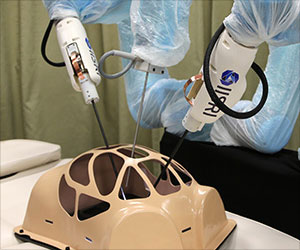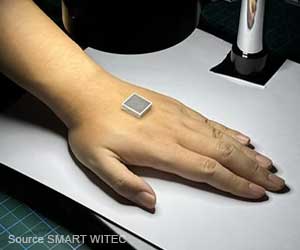New robotic cane device called CANINE can provide light-touch assistance in walking to the aged and others with impaired mobility, finds a new study.

TOP INSIGHT
New light-touch robotic device, called CANINE, acts as a cane-like mobile assistant and improves the individual's self-awareness in space, during walking, which in turn promotes stability and balance.
"The subjects walk on a mat instrumented with sensors while the mat records step length and walking rhythm, essentially space and time parameters of walking, so that we can analyze a person's gait and the effects of light touch on it."
The light-touch robotic cane, called CANINE, acts as a cane-like mobile assistant. The device improves the individual's proprioception, or self-awareness in space, during walking, which in turn improves stability and balance.
"This is a novel approach to providing assistance and feedback for individuals as they navigate their environment," said Joel Stein, Simon Baruch Professor of Physical Medicine and Rehabilitation and chair of the department of rehabilitation and regenerative medicine at Columbia University Irving Medical Center, who co-authored the study with Agrawal. "This strategy has potential applications for a variety of conditions, especially individuals with gait disorders."
To test this new device, the team fitted 12 healthy young people with virtual reality glasses that created a visual environment that shakes around the user both side-to-side and forward-backward to unbalance their walking gait. The subjects each walked ten laps on the instrumented mat, both with and without the robotic cane, in conditions that tested walking with these visual perturbations. In all virtual environments, having the light-touch support of the robotic cane caused all subjects to narrow their strides. The narrower strides, which represent a decrease in the base of support and a smaller oscillation of the center of mass, indicate an increase in gait stability due to the light-touch contact.
While mobility impairments affect 4% of people aged 18 to 49, this number rises to 35% of those aged 75 to 80 years, diminishing self-sufficiency, independence, and quality of life. By 2050, it is estimated that there will be only five young people for every old person, as compared with seven or eight today.
Source-Eurekalert
 MEDINDIA
MEDINDIA




 Email
Email



